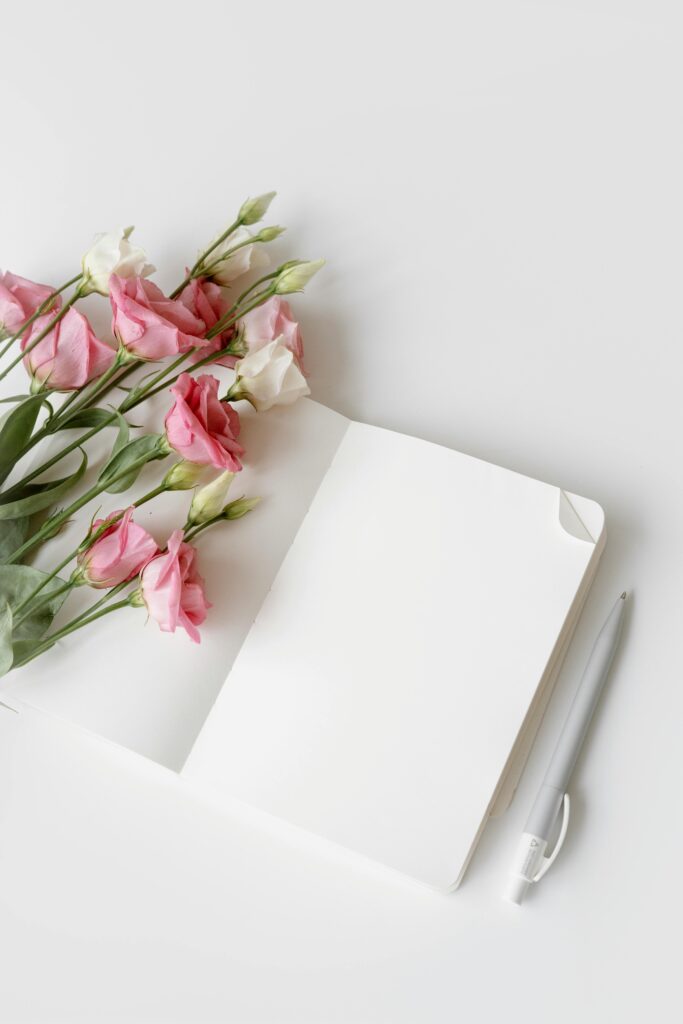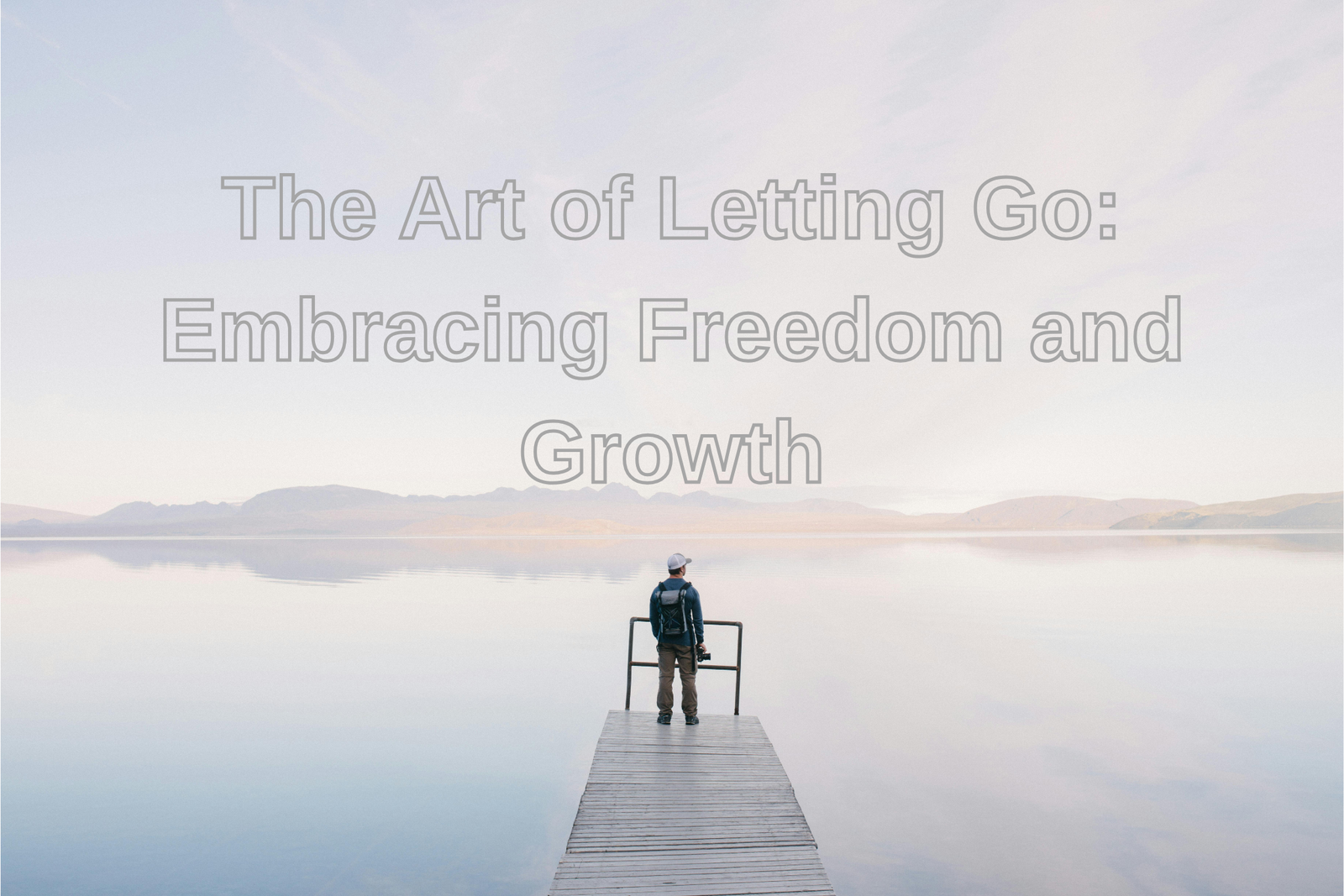In a world that often celebrates holding on-to relationships, ambitions or even old versions of ourselves-choosing to let go can feel like swimming against the tide. Yet, letting go is not about loss or defeat; it’s about creating space for peace, growth and new possibilities. It’s like clearing out a cluttered attic to make room for light and air. The art of letting go is a transformative practice that invites us to release what weighs us down and embrace a lighter, more authentic life. Here’s how to master this skill with practical steps, heartfelt insights and a vision for the freedom that awaits.
Why Letting Go Matters
Imagine carrying a backpack filled with heavy stones. Each stone represents something you’re clinging to- a grudge, a regret, an outdated dream or a toxic connection. With every step, the weight slows you down, draining your energy and clouding your vision. Letting go is the act of setting down those stones, one by one, to walk freely again. It’s not about erasing the past or pretending it didn’t matter; it’s about trusting that your future deserves space to unfold.

When we release what no longer serves us, we open the door to new opportunities, relationships and versions of ourselves. Letting go is an act of courage, a declaration that we value our growth and well-being over the comfort of the familiar. It’s the first step toward a life that feels vibrant, aligned and true.
Seven Steps to Master Letting Go
Letting go can feel overwhelming but it’s a skill anyone can cultivate with intention and practice. Here are seven practical steps to guide you on this journey:
1. Acknowledge and Accept Your Truth
The first step to letting go is naming what you’re holding onto. Is it a resentment from a past betrayal? A career path that no longer excites you. Or perhaps an idealized version of yourself that you’ve outgrown? Take a moment to identify it. Write it in a journal, say it aloud or confide in a trusted friend. Naming the weight makes it real and manageable.
Next, accept your feelings without judgment. It’s okay to feel attached, nostalgic or even scared. Letting go doesn’t mean dismissing your emotions; it means honoring them while choosing to move forward. For example, if you’re holding onto a friendship that’s become one-sided, acknowledge the love you once shared, then give yourself permission to prioritize your peace.
2. Reframe the Narrative
Letting go can feel like loss but it’s really about liberation. Shift your perspective by asking: What will I gain by releasing this? Instead of focusing on what you’re leaving behind, focus on what you’re inviting in. For instance:
- Letting go of a grudge frees you from the chains of anger, giving you emotional clarity.
- Releasing an unfulfilled goal makes space for dreams that align with who you are today.
- Ending a draining relationship opens the door to connections that uplift and inspire you.
Try this exercise: Write down one thing you’re holding onto, then list three positive outcomes of letting it go. This simple act can transform your mindset from scarcity to abundance.
3. Take Small, Intentional Actions
Letting go is a process, not a single event. Start with small, tangible steps to build momentum:

- Declutter Your Space: Donate clothes, books or mementos tied to memories you’re ready to release. For example, giving away an old jacket from a past relationship can feel surprisingly liberating.
- Curate Your Digital World: Unfollow social media accounts that trigger comparison, envy or pain. Clear out old emails or photos that keep you tethered to the past.
- Create a Ritual: Write a letter to someone (or yourself) expressing forgiveness or closure. You don’t need to send it-burn it, shred it or tuck it away as a symbol of release.
Each small action is a step toward freedom. Celebrate these moments, no matter how small, as victories in your journey.
4. Practice Self-Compassion
Letting go can stir up complex emotions-guilt, sadness or even relief. Be gentle with yourself during this process. You might feel guilty for distancing yourself from a family member or uncertain about abandoning a long-held dream. Remind yourself that letting go is an act of self-love, not betrayal.
Try this: Set aside five minutes for a self-compassion practice. Close your eyes, place a hand on your heart and say, “I’m doing my best, and that’s enough.” Journaling, meditating or taking a quiet walk can also help you process emotions without judgment. Self-compassion gives you the strength to let go without feeling like you’re failing.
5. Build a Support System
You don’t have to navigate this journey alone. Share your intentions with a trusted friend, family member or therapist. They can offer perspective, encouragement or simply a listening ear. For example, when I decided to let go of a perfectionist mindset, talking to a mentor helped me see that my worth wasn’t tied to flawless performance.

Consider joining a community-whether a local support group, an online forum or a book club focused on personal growth. Hearing others’ stories of letting go can inspire and normalize your own process. Connection reminds us that we’re not alone in our struggles or triumphs.
6. Replace Old Patterns with New Ones
Letting go leaves empty spaces, which can feel uncomfortable at first. Fill those spaces with habits or experiences that align with your growth. For example:
- If you’re letting go of a toxic work environment, explore a new hobby or skill to rediscover your passion.
- If you’re releasing a past relationship, invest time in friendships or self-care activities that bring joy.
- If you’re moving on from self-doubt, practice affirmations like, “I am enough,” to rewire your inner narrative.
Think of this as planting new seeds in the garden of your life. What you nurture now will shape what blooms next.
7. Trust the Process Over Time
Letting go is rarely a one-and-done event. It’s a journey that unfolds at its own pace. Some days, you’ll feel light and free; others, you might wrestle with doubt or nostalgia. That’s okay. Trust that each step forward, no matter how small, is progress.
Set a gentle reminder to check in with yourself weekly or monthly. Ask: Am I still carrying this weight? What’s one thing I can release today? Over time, these check-ins build a habit of letting go, making it easier to release what no longer serves you.
Overcoming Common Barriers to Letting Go
Letting go isn’t always smooth sailing. Here are three common obstacles and how to navigate them:
- Fear of the Unknown: The familiar, even if painful, can feel safer than uncertainty. Remind yourself that letting go doesn’t mean losing control-it means trusting your ability to adapt. Visualize a positive outcome, like a new opportunity or a sense of peace, to anchor you.
- Guilt or Obligation: You might feel obligated to hold onto a relationship or role out of loyalty. Ask: Is this serving my growth, or am I staying out of fear? For example, staying in a draining friendship out of guilt might prevent you from forming healthier connections.
- Attachment to Identity: Sometimes, we cling to things because they define us. Letting go of a career path, for instance, might feel like losing part of yourself. Reflect on who you’re becoming, not who you were, to embrace a new identity rooted in growth.
The Beauty of Empty Spaces

When we let go, we create empty spaces in our hearts and lives. At first, these spaces might feel like voids-quiet, unfamiliar, even unsettling. But emptiness is not the end; it’s the beginning. It’s the blank canvas where new dreams take shape, the open field where fresh connections grow, the quiet moment before a new chapter begins.
Picture your life as a garden. Before new flowers can bloom, you must clear the weeds and prepare the soil. Letting go is the act of tending to your inner garden, trusting that what grows next will be vibrant and beautiful. Those empty spaces are your opportunity to create a life that reflects who you are now, not who you were yesterday.
Real-Life Inspiration: Stories of Letting Go
To make this practice feel more tangible, consider these real-life examples (inspired by common experiences, not specific individuals):
- Maria’s Story: Maria held onto a corporate job she hated because it felt “safe.” When she finally let go, she took a leap into freelance writing. The transition was scary, but it led to a career that aligned with her passion for storytelling.
- James’ Story: James carried resentment toward a friend who betrayed him years ago. By writing a letter of forgiveness (which he never sent), he released the anger and found space for new, trusting friendships.
- Aisha’s Story: Aisha struggled to let go of her perfectionist tendencies. Through journaling and therapy, she learned to celebrate progress over perfection, which gave her the confidence to start her own business.
These stories remind us that letting go, while challenging, opens doors to unexpected joy and growth.
Reflective Writings to Deepen Your Practice
To help you apply these ideas, try these journal writings:

- What’s one thing I’m holding onto that no longer serves me? Why is it hard to let go?
- What would my life look like if I released this weight? What possibilities might open up?
- What’s one small action I can take today to start letting go?
- How can I show myself compassion as I navigate this process?
Write for 5–10 minutes per prompt or simply reflect during a quiet moment. These questions can help you uncover insights and build momentum.
A Final Thought
The art of letting go is a lifelong practice but it begins with a single, courageous choice: to release what weighs you down and embrace what lifts you up. You don’t need to do it perfectly or all at once. Start today with one small step-unfollow a triggering account, forgive a past mistake or take a deep breath and say, “I’m ready to let this go.”
The journey to freedom is yours to shape. What will you release today to make room for growth? What new seeds will you plant in the empty spaces? The possibilities are endless and they begin with you.

Call to Action: Share one thing you’re ready to let go of in the comments below or journal about it privately. Let’s inspire each other to embrace the lightness of letting go!

I just could not leave your web site before suggesting that I really enjoyed the standard information a person supply to your visitors Is gonna be again steadily in order to check up on new posts
Thanks for your feedback.
Checkout our other posts also.
Your blog has quickly become my go-to source for reliable information and thought-provoking commentary. I’m constantly recommending it to friends and colleagues. Keep up the excellent work!
Thanks for your feedback.
Checkout our other posts also.
Your blog is a testament to your dedication to your craft. Your commitment to excellence is evident in every aspect of your writing. Thank you for being such a positive influence in the online community.
Thanks for your feedback.
Checkout our other posts also.
My brother suggested I might like this blog He was totally right This post actually made my day You can not imagine simply how much time I had spent for this info Thanks
Thanks for your feedback.
Checkout our other posts also.
Your blog is a constant source of inspiration for me. Your passion for your subject matter is palpable, and it’s clear that you pour your heart and soul into every post. Keep up the incredible work!
Thanks for your feedback.
Checkout our other posts also.
Your ability to distill complex concepts into digestible nuggets of wisdom is truly remarkable. I always come away from your blog feeling enlightened and inspired. Keep up the phenomenal work!
Thanks for your feedback.
Checkout our other posts also.
Hey there You have done a fantastic job I will certainly digg it and personally recommend to my friends Im confident theyll be benefited from this site
Thanks for your feedback.
Checkout our other posts also.
you are in reality a just right webmaster The site loading velocity is incredible It seems that you are doing any unique trick In addition The contents are masterwork you have performed a wonderful task on this topic
Thanks for your feedback.
Checkout our other posts also.
I do believe all the ideas youve presented for your post They are really convincing and will certainly work Nonetheless the posts are too short for novices May just you please lengthen them a little from subsequent time Thanks for the post
Thanks for your feedback.
Checkout our other posts also.
My brother suggested I might like this blog He was totally right This post actually made my day You can not imagine simply how much time I had spent for this info Thanks
Thanks for your feedback.
Checkout our other posts also.
My brother suggested I might like this website He was totally right This post actually made my day You cannt imagine just how much time I had spent for this information Thanks
Thanks for your feedback.
Checkout our other posts also.
Your blog is a constant source of inspiration for me. Your passion for your subject matter is palpable, and it’s clear that you pour your heart and soul into every post. Keep up the incredible work!
Thanks for your feedback.
Checkout our other posts also.
Your blog is a testament to your dedication to your craft. Your commitment to excellence is evident in every aspect of your writing. Thank you for being such a positive influence in the online community.
Thanks for your feedback.
Checkout our other posts also.
Your blog is a constant source of inspiration for me. Your passion for your subject matter is palpable, and it’s clear that you pour your heart and soul into every post. Keep up the incredible work!
Thanks for your feedback.
Checkout our other posts also.
Hi i think that i saw you visited my web site thus i came to Return the favore Im attempting to find things to enhance my siteI suppose its ok to use a few of your ideas
Thanks for your feedback.
Checkout our other posts also.
Hi my family member I want to say that this post is awesome nice written and come with approximately all significant infos I would like to peer extra posts like this
Thanks for your feedback.
Checkout our other posts also.
I just wanted to drop by and say how much I appreciate your blog. Your writing style is both engaging and informative, making it a pleasure to read. Looking forward to your future posts!
Thanks for your feedback.
Checkout our other posts also.
I wanted to take a moment to commend you on the outstanding quality of your blog. Your dedication to excellence is evident in every aspect of your writing. Truly impressive!
Thanks for your feedback.
Checkout our other posts also.
Usually I do not read article on blogs however I would like to say that this writeup very compelled me to take a look at and do it Your writing style has been amazed me Thank you very nice article
Thanks for your feedback.
Checkout our other posts also.